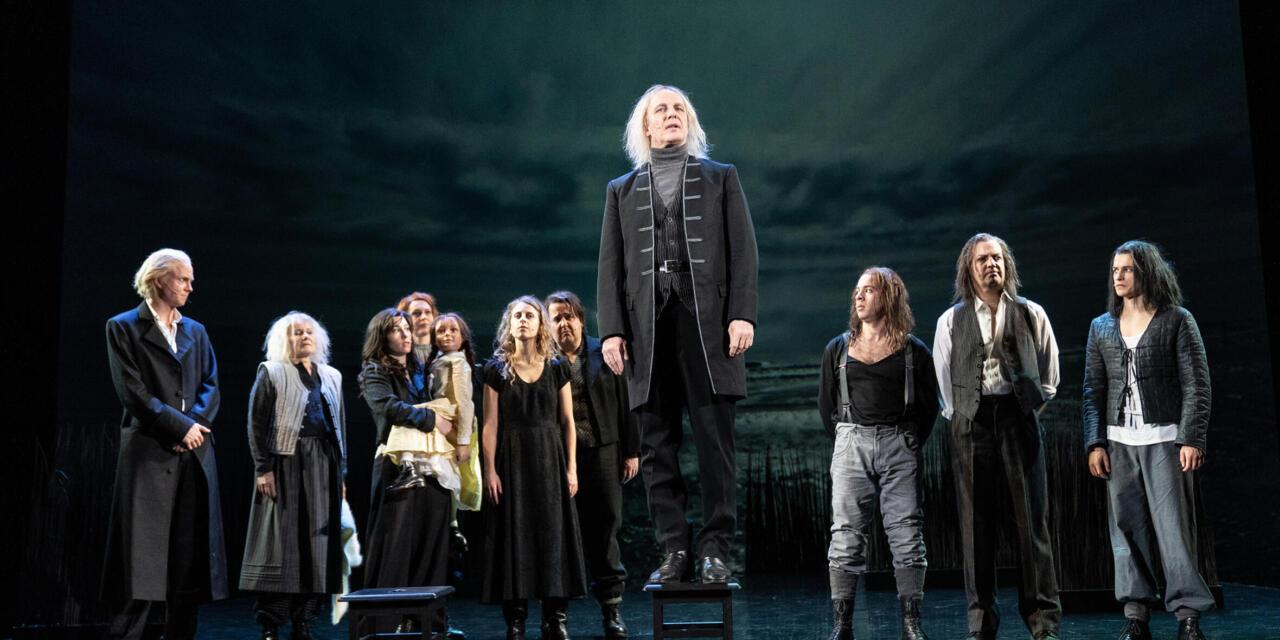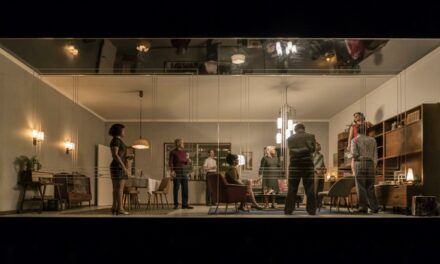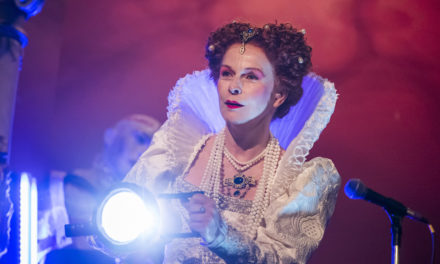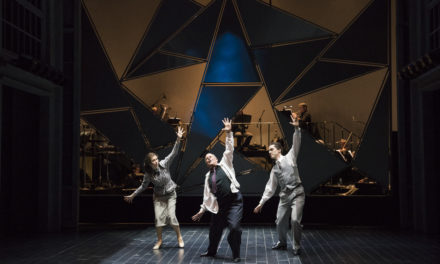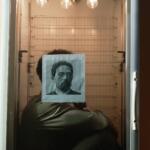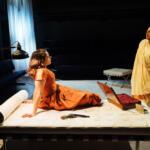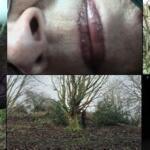Der Schimmelreiter (The Rider on the White Horse) is a novella by German writer Theodor Storm (1817-1888), which Storm completed just months before his death. It has been acknowledged as among Storm’s most well-known works of literature. Storm constitutes a major component of the German literary canon, and Der Schimmelreiter has been compulsory reading for many school curricula for a long time. Dramaturg and playwright John von Düffel (b. 1966) created a stage version of the novella in 2008 (premiered at the Thalia Theater, Hamburg), which was used as the basis for the current production at Oldenburgisches Staatstheater.
The central character of novella and play is Hauke Haien, son of a land surveyor. He is an outsider, helping his father, keen on the mathematics involved in calculating the impact of the coastal embankments. He finds employment as a low-ranking farm laborer on the farm of the local dike warden, helping him more in his dike-related work than on the farm, in the hope of succeeding him on his death. When the dike warden dies, Haien is able to combine his own inheritance with that of the deceased dike warden by marrying his daughter, Elke. Thus, he gathers enough money to be able to become dike warden, trajecas intended. The locals do not like Haien and his ways, his new ideas, and his reluctance to share their belief in the local myths to do with the floods. Ole Peters develops into his main adversary. Haien nevertheless succeeds in having a new embankment built, which, so the story forming the frame of the novella goes, lasts at least one hundred years, a comparatively huge amount of time, suggesting his ideas were right and through building the new embankment he would have saved many lives otherwise lost in floods. However, he weakens in his endeavours to have the old embankment repaired as needed. Those repairs are not undertaken, and a major flood destroys the embankment, leading to disaster. Haien sees his wife and their mentally disabled daughter drown and throws himself into the floods. A sub-plot intricately woven into this main plot trajectory centers on Trien Jans, an old woman who plays a major part in Hauke Haien’s life, bringing into further focus Haien’s ambiguous nature: when Haien was young, Trien Jans lived on her own in a small hut on the dike, with a white angora tom cat (the only thing left to her from her son, deceased at sea). Haien had killed the tom cat after that cat killed a bird Hauke had caught on the tideland. Trien Jans had promised to keep silent about this after Hauke’s father had given her money and had promised her a new cat. The event had been the occasion for Hauen to move out of his parental home. Later he reconciled with Trien Jans. She has also been close to Elke and comes to live with Hauke and Elke on their farm. Here, a close relationship develops between Trien and her current animal companion, a seagull named Claus, and Wienke and her dog. On Trien’s deathbed, her last words can be understood as a prophecy of the dike disaster to follow.
The design team of Pascale Arndtz (set and costumes), Marc Lontzek (video) and Arne Waldl (lighting design) presented an impressive idea of poetic realism. A large projection screen at the back of the stage space showed video of stormy or calm seas, and various on-land beach-related landscapes, shifting from scene to scene as needed. Any real-life environment is always present, never “not there”, and even stillness has movement in it. This state of things was reflected well in the projections onto the screen, which were ongoing throughout the performance. The costumes particularly emphasized the outsider-nature of Hauke Haien: while the other men wore simple outfits suggesting people who are working hard physically, Haien wore a white shirt initially, and more elegant garments after he had become dike warden. Casting also contributed to the foregrounding of difference: while the other men, in particular Haien’s main adversary Ole Peters, came across as burly men, Haien was rather lank. The daughter of Hauke and Elke, Wienke, was represented by a child-sized puppet handled unassumingly by three actors. Overall, the production, managed to capture the intriguing, intricate juxtaposition of the calmness and expanse of the narration with that very narration’s stormy contents in terms of outside weather and innermost emotions. This was due to the nature of the stage version by von Düffel and the sensitive direction of Milena Paulovics.
Tobias Schormann brought out Haien’s conflicted personality very accurately and with many subtle nuances. As his main adversary, Ole Peters, Klaas Schramm movingly portrayed the outwardly rough man with occasional surprising depth of simple wisdom. Tamara Theisen has an enormous natural stage presence as Haien’s love interest turning wife. Her Elke Volkerts was a strong, energetic and independent woman. She wanted Hauke as her husband and did a lot to get him. She wielded command as much as possible, and she retained her strength when faced with her daughter’s mental illness and the social disdain this brought about. Caroline Nagel was impressively melodramatic as Trien Jans, and the rest of the company were fully convincing as the other characters of prose original and stage version: the respective fathers of Hauke and Elke, the chief dike warden, and vilagers.
This post was written by the author in their personal capacity.The opinions expressed in this article are the author’s own and do not reflect the view of The Theatre Times, their staff or collaborators.

